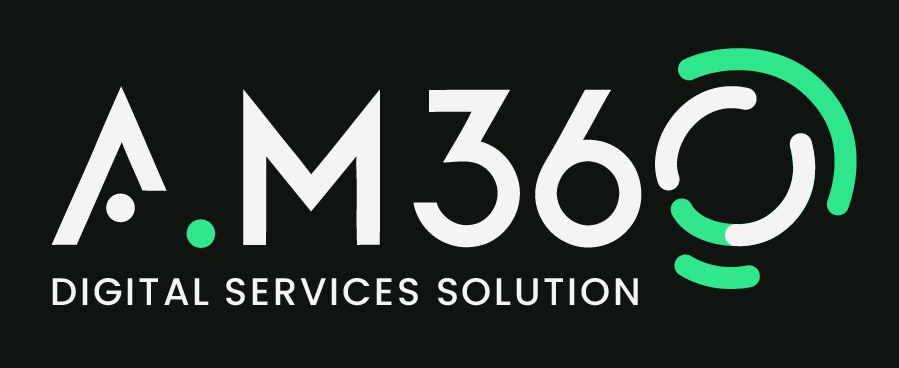
The Role of Workforce Management in Business Success
How Strategic Workforce Management Drives Productivity, Compliance, and Growth In today’s fast-paced business environment, organizations face unprecedented challenges: shifting labor laws, the rise of remote work, and the demand for real-time data to drive decisions. At the heart of navigating these complexities lies workforce management—a systematic approach to optimizing employee productivity, ensuring compliance, and aligning human capital with organizational goals. From employee scheduling to workforce analytics, effective workforce management is no longer optional—it’s the backbone of sustainable business success. This article explores the critical components of workforce management, including HR software, productivity tracking, team management, and payroll solutions, while addressing modern challenges like remote work and labor laws. Let’s dive into how businesses can harness these tools to build resilient, future-ready operations. Chapter 1: Workforce Management Defined What Is Workforce Management? Workforce management (WFM) refers to the processes and technologies businesses use to maximize employee efficiency, reduce operational costs, and maintain compliance. It encompasses: Employee scheduling Productivity tracking Labor forecasting Payroll solutions Compliance with labor laws By integrating these elements, companies can align their workforce with strategic objectives while fostering employee satisfaction. According to a Gartner report, organizations that prioritize WFM see a 20–30% improvement in operational efficiency. Chapter 2: The Pillars of Effective Workforce Management 1. Employee Scheduling: Balancing Demand and Capacity Effective employee scheduling ensures the right people are in the right roles at the right time. Poor scheduling leads to understaffing, overtime costs, and burnout. Modern tools like HR software automate shift planning by analyzing historical data, seasonal trends, and employee availability. Example: Retail giants like Walmart use AI-driven scheduling systems to align staff hours with customer foot traffic, reducing labor costs by 15% (McKinsey & Company). Key Benefits: Minimizes overtime expenses. Ensures compliance with labor laws (e.g., mandatory break times). Boosts employee morale through fair shift分配. 2. HR Software: The Digital Backbone of Workforce Management Modern HR software centralizes critical functions like recruitment, onboarding, and performance reviews. Platforms like BambooHR and Workday integrate payroll solutions, productivity tracking, and compliance tools into a single dashboard. Case Study: A mid-sized tech firm reduced administrative workload by 40% after adopting SAP SuccessFactors for automated leave management and real-time workforce analytics (Deloitte). Why It Matters: Streamlines communication across remote teams. Reduces errors in payroll solutions. Provides actionable insights via workforce analytics. 3. Productivity Tracking: Measuring What Matters Productivity tracking tools like Time Doctor and Hubstaff monitor employee output, identify bottlenecks, and highlight top performers. However, balancing surveillance with trust is critical—especially in remote work environments. Statistic: Companies using productivity tools report a 25% increase in output, according to Forbes. Best Practices: Set clear KPIs aligned with business goals. Use workforce analytics to refine workflows. Avoid micromanagement to maintain morale. 4. Team Management: Leading in a Hybrid World The rise of remote work has redefined team management. Leaders must foster collaboration across time zones while addressing isolation and burnout. Tools like Slack and Microsoft Teams enable real-time communication, while project management platforms like Asana keep tasks on track. Example: GitLab, a fully remote company, attributes its success to transparent communication and asynchronous workflows (GitLab Remote Report). Strategies for Success: Regular check-ins to maintain engagement. Invest in upskilling for distributed teams. Leverage workforce analytics to assess team performance. 5. Labor Laws: Navigating Compliance Risks Non-compliance with labor laws can result in fines, lawsuits, and reputational damage. Key areas include: Overtime regulations (e.g., FLSA in the U.S.) Minimum wage requirements Workplace safety standards (OSHA) HR software with built-in compliance features automates record-keeping and alerts managers to potential violations. For instance, Paycor offers tools tailored to regional regulations. Statistic: 52% of businesses face labor-related penalties due to manual compliance processes (SHRM). 6. Payroll Solutions: Accuracy Meets Efficiency Manual payroll processing is error-prone and time-consuming. Integrated payroll solutions like Gusto and ADP automate tax filings, benefits administration, and direct deposits. These systems sync with HR software to ensure seamless data flow. Case Study: A manufacturing company reduced payroll errors by 90% after switching to UKG Ready (UKG Case Study). Advantages: Eliminates manual data entry. Ensures timely payments, boosting employee trust. Integrates with workforce analytics for cost forecasting. 7. Workforce Analytics: Data-Driven Decision Making Workforce analytics transforms raw data into actionable insights. By analyzing trends in attendance, turnover, and productivity, businesses can: Predict staffing needs. Identify high-potential employees. Mitigate risks (e.g., burnout, compliance gaps). Tools like Tableau and Visier visualize data, making it accessible to non-technical stakeholders. Example: Coca-Cola used predictive analytics to reduce turnover by 15% in its supply chain division (Harvard Business Review). Chapter 3: Overcoming Modern Workforce Challenges Remote Work: Managing Dispersed Teams The shift to remote work demands new strategies for team management and productivity tracking. Solutions include: Virtual onboarding programs. Cybersecurity training. Tools like Zoom and Trello for collaboration. Statistic: 74% of companies plan to adopt hybrid work permanently (Microsoft Work Trend Index). Compliance in a Globalized Economy Businesses operating across borders must navigate varying labor laws. Platforms like Papaya Global simplify international payroll and compliance. Chapter 4: The Future of Workforce Management Emerging trends like AI-driven employee scheduling, blockchain for payroll solutions, and immersive training via AR/VR are reshaping WFM. Companies that adopt these innovations early will gain a competitive edge. Conclusion: Workforce Management as a Growth Catalyst From employee scheduling to workforce analytics, effective workforce management is the cornerstone of business success. By leveraging HR software, adhering to labor laws, and embracing remote work tools, organizations can build agile, compliant, and high-performing teams. Investing in WFM isn’t just about surviving—it’s about thriving in an era of constant change. External Links for Further Reading: SHRM’s Guide to Labor Law Compliance Gartner’s Future of Work Trends Microsoft’s Hybrid Work Toolkit Deloitte’s Workforce Analytics Study By integrating these strategies, businesses can transform workforce management from a cost center into a strategic asset.
Read More
What Is Workforce Management (WFM)? The Ultimate Guide to Efficiency, Compliance, and Growth
Introduction In an era where businesses face unprecedented challenges—remote workforces, fluctuating customer demands, and evolving labor laws—Workforce Management (WFM) has emerged as a critical solution for sustainable growth. WFM isn’t just about scheduling shifts or tracking hours; it’s a holistic strategy that bridges the gap between employee productivity and organizational success. By leveraging advanced technologies like AI, IoT, and cloud computing, WFM empowers companies to optimize labor costs, ensure compliance, and deliver exceptional customer experiences. This 2,000+ word guide unpacks what workforce management (WFM) means, its evolution, key components, tools, and actionable strategies to implement it effectively. What Is Workforce Management (WFM)? Workforce Management (WFM) is a systematic approach to aligning an organization’s workforce with its operational goals. It combines processes, tools, and analytics to ensure the right employees are assigned the right tasks at the right time, while adhering to labor laws and budget constraints. Why WFM Matters For Retailers: Ensures stores are staffed during peak hours to prevent lost sales. For Healthcare: Balances nurse-to-patient ratios to maintain care quality. For Logistics: Optimizes driver schedules to meet delivery deadlines. Example: Amazon uses WFM to manage over 1.5 million warehouse employees globally, ensuring seamless operations during high-demand periods like Prime Day. The Evolution of Workforce Management WFM has transformed from rudimentary manual processes to AI-driven systems. Here’s a timeline of its evolution: 1990s: The Manual Era Paper-Based Scheduling: Managers created shifts using spreadsheets or pen-and-paper. Punch Clocks: Employees physically clocked in/out, leading to time theft and errors. 2000s: The Rise of Automation Basic Software: Tools like Kronos introduced digital time tracking and scheduling. Compliance Tools: Automated alerts for labor law violations (e.g., overtime limits). 2010s: Cloud and Mobile Integration Cloud-Based Platforms: Solutions like SAP SuccessFactors enabled remote access. Mobile Apps: Employees could view schedules or request time off via smartphones. 2024: AI and Predictive Analytics AI-Driven Forecasting: Tools predict staffing needs with 95% accuracy using historical data. IoT Integration: Wearables track productivity in real-time (e.g., warehouse workers). Key Takeaway: Modern WFM is proactive, not reactive, thanks to predictive analytics and machine learning. Key Components of Workforce Management WFM isn’t a single tool—it’s a combination of interconnected processes. Let’s break them down: a) Scheduling Scheduling ensures the right employees are assigned to the right tasks based on demand, skills, and availability. AI-Powered Tools: Platforms like UKG Kronos analyze sales data, foot traffic, and historical trends to create optimized schedules. Use Case: A retail chain reduced overstaffing by 20% during off-peak hours using AI-driven scheduling (Forrester). Best Practice: Allow employees to swap shifts via self-service apps like Deputy to improve morale. b) Time and Attendance Tracking Accurate tracking of work hours, breaks, and absences is vital for payroll and compliance. Biometric Systems: Fingerprint or facial recognition scanners eliminate buddy punching. GPS Tracking: Field employees (e.g., delivery drivers) clock in via mobile apps with location verification. Stat: Companies using automated systems reduce payroll errors by 45% (ADP). Compliance Tip: Track rest breaks to avoid violations of the Fair Labor Standards Act (FLSA). c) Forecasting Forecasting uses data analytics to predict future staffing needs. Demand-Based Forecasting: Call centers analyze call volume trends to schedule agents. Event-Driven Forecasting: Hotels adjust staffing for conferences or holidays. Example: A healthcare provider used WFM forecasting to reduce patient wait times by 35% during flu season. Tool Recommendation: Oracle WFM Cloud combines AI and machine learning for precise predictions. d) Compliance Management WFM ensures adherence to labor laws, safety regulations, and industry standards. Automated Alerts: Notify managers of potential violations (e.g., overtime limits or missed breaks). Audit Trails: Maintain digital records for regulators (e.g., OSHA inspections). Case Study: A manufacturing company reduced compliance fines by 40% after implementing WFM software (Deloitte). e) Performance Management Tracking employee performance helps identify top performers and areas for improvement. KPIs: Measure metrics like attendance, task completion rates, and customer feedback. Gamification: Tools like Hubstaff reward employees with badges or bonuses for meeting targets. Stat: Gamified performance systems boost engagement by 25% (Gallup). Benefits of Workforce Management Implementing WFM delivers tangible ROI across industries: a) Increased Efficiency Reduced Idle Time: AI-optimized schedules cut downtime by 25% in manufacturing. Faster Decision-Making: Real-time dashboards help managers adjust staffing on the fly. b) Cost Savings Labor Cost Reduction: Retailers save up to $1.2 million annually through efficient scheduling (HBR). Overtime Control: Alerts prevent unnecessary overtime costs. c) Improved Compliance Automated Record-Keeping: Pass audits 90% faster with digital timesheets and compliance logs. Risk Mitigation: Avoid penalties for violations of GDPR, FLSA, or OSHA. d) Enhanced Productivity Skill-Based Scheduling: Assign tasks based on employee strengths (e.g., bilingual staff for customer service). Employee Empowerment: Self-service portals reduce administrative bottlenecks. e) Better Customer Service Adequate Staffing: Restaurants using WFM report 30% fewer customer complaints during rush hours. Faster Response Times: Call centers meet SLAs consistently with optimized staffing. Top Workforce Management Tools for 2024 Choosing the right WFM software depends on your business size and industry. Here’s a detailed comparison: Tool Key Features Best For Pricing UKG Kronos AI-driven scheduling, labor analytics Large enterprises Custom quote BambooHR Employee self-service, time-off tracking SMEs Starts at $6/employee Deputy Shift swapping, mobile clock-ins Retail, healthcare $4.50/user/month Zoho People Attendance tracking, leave management Remote teams $1.50/user/month Salesforce WFM CRM integration, real-time analytics Sales teams $25/user/month External Resource: Compare features and read user reviews on Capterra’s WFM Software List. Best Practices for Effective WFM Implementation To maximize WFM’s impact, follow these strategies: a) Integrate WFM with Existing Systems HRIS Integration: Sync WFM with platforms like Workday for seamless data flow. ERP Compatibility: Connect staffing data with inventory or sales systems. b) Train Managers and Employees AI Tool Training: Teach managers to interpret predictive analytics dashboards. Employee Workshops: Educate staff on using self-service apps for shift swaps. c) Prioritize Compliance Regular Audits: Review schedules and timesheets quarterly for FLSA/OSHA adherence. Localize Policies: Adapt WFM rules for regional labor laws (e.g., EU vs. US regulations). d) Leverage Data Analytics Track KPIs: Monitor metrics like labor cost per unit, absenteeism rates, and schedule adherence. Continuous Improvement: Use feedback
Read More